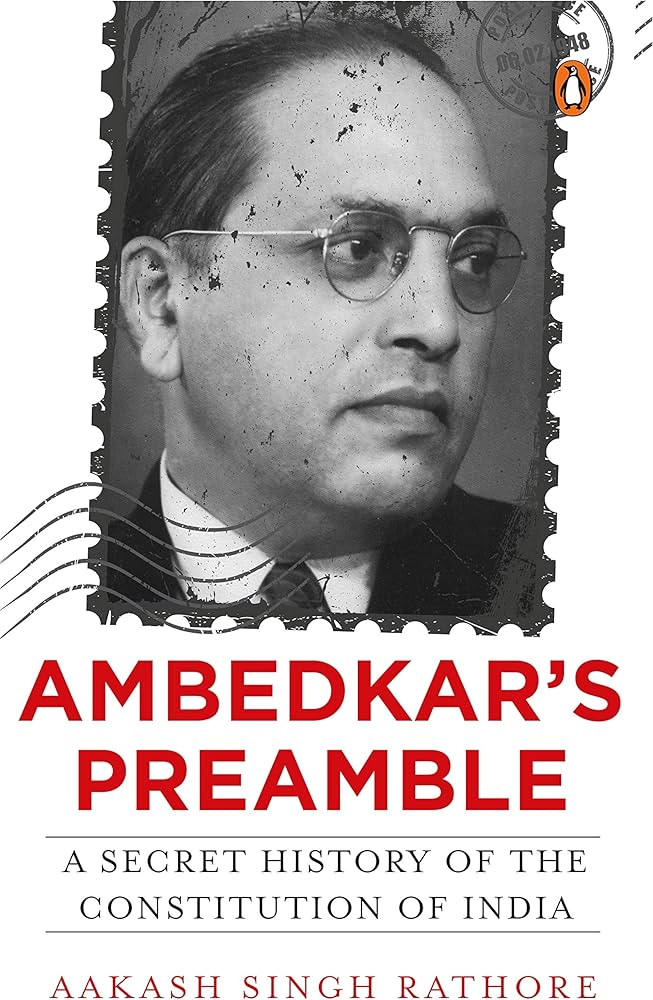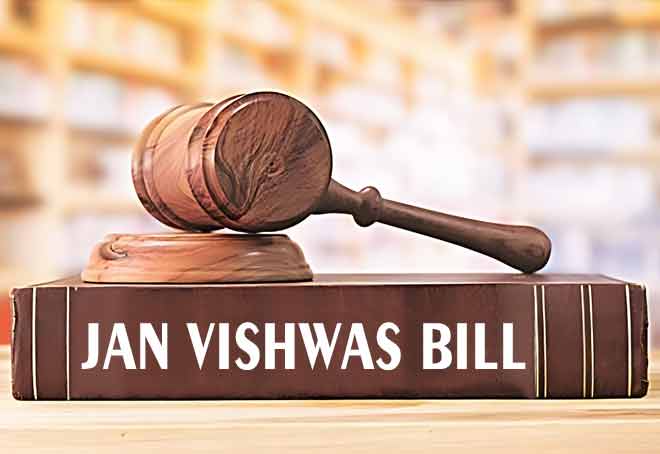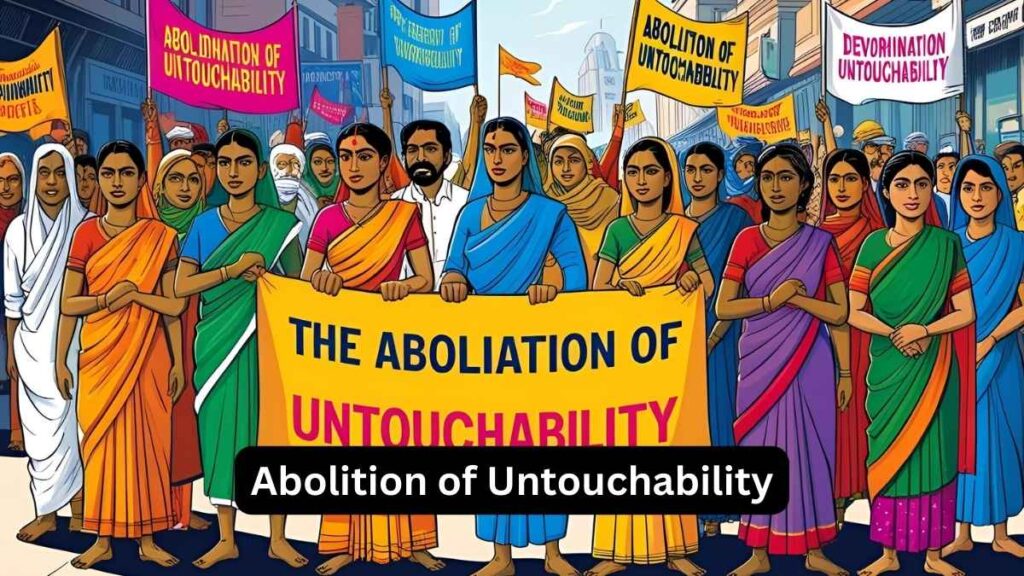Book Review: Ambedkar’s Preamble
As parliamentary disruptions put political discourse under pressure, different factions invoked the legacy of the father of the Indian Constitution in their debates. This was coming when the 2024 elections were contested over who are defenders and destroyers of the holy grail of India, i.e., the Constitution of India.
The book, “Ambedkar’s Preamble: A Secret History of the Constitution of India”, is divided into six major sections that define Dr BR Ambedkar’s utmost faith in the constitutional values of justice, liberty (freedom), equality, fraternity, dignity, and nation.
Ramchandra Guha on Ambedkar:
Ambedkar was an admirer of city life and modern technology who dismissed the Indian village as a den of iniquity. Ambedkar was a steadfast constitutionalist who worked within the state and sought solutions to social problems with the aid of the state.
When it comes to justice, Ambedkar is generally seen as having a stronger affinity for social justice. However, Aakash Singh Rathore presents him as a ‘living justice‘, emphasising his work on political and economic justice as well. Ambedkar’s views ensured the protection of social groups sitting in the lower strata of society. While the Constitution of India has been the symbol of political and social justice, Ambedkar has been at the forefront in terms of economic policies that stressed state intervention in certain sectors of the economy. BR Ambedkar played a significant role in shaping India’s economic policies and was instrumental in projects like Hirakud and Damodar Valley. His economic ideas influenced the establishment of the Reserve Bank of India. He also aspired to be the Union Minister for Development. Regarding poverty elimination, he also brought a bill as a member of the Legislative Assembly of the Bombay Province that was aimed to curb population growth.
In the context of freedom, where the model is based upon enjoying the rights and entitlements (whether red, blue, or any other coded rights), Ambedkar relied more upon the annihilation of untouchability, which was a symbol of both historical and social injustice. Therefore, where Tilak stated that Swaraj is a birthright, Ambedkar stated that the annihilation of untouchability is a birthright. Through this, Ambedkar was clear that while Gandhian Swaraj was more about the abolition of slavery, Ambedkar Swaraj had a precondition for liberty for the Dalits.
Why did Ambedkar feel that Congress and Gandhi were insincere about the removal of untouchability?
Dr. Ambedkar highlights three instances. Firstly, the fourth objective of the Bardoli Programme, which aimed for the upliftment of weaker sections of society, remained ineffective as funds were not appropriated. Due to this, even stalwarts like Swami Shradhanand of the Arya Samaj resigned.
Secondly, Gandhi and the Congress opposed the idea behind the Mahad and Nasik Satyagraha, which challenged caste discrimination within Hindu society rather than directly opposing British rule. Thirdly, the way they (Gandhi and Congress) rejected the notion of separate electorates and any kind of affirmative actions that could have benefited the lower castes.
What have been the inegalitarian counter-revolutions?
- Politically, by Pushyamitra Sunga when he overthrew the Mauryan dynasty.
- Legally, by the Dharmashastra, and most crucially by Manusmriti.
- Ideologically, stabilised by the caste-rigid orthodox philosophy (especially by Mimamsa and Vedanta) and the pan-Indian spread of religious precepts (i.e., Varnashramadharma).
For Ambedkar, equality—a principle that could have disrupted the Brahmanical order—had been the focus of struggle since the twelfth century. Dr. Ambedkar always felt that while some events ensured equality, counter-revolution was going on to restore order. He closely watched the Hindu orthodoxy that strongly opposed his efforts to democratise Hindu personal law, inheritance, and succession. They ensured that his pioneering Hindu Code Bill failed in Parliament. Dr. Ambedkar found some thinkers of different ideological factions, like MN Roy, who were stressing the idea of radical equality with certain differences.
Dr. Ambedkar regarded patriarchy as the twin sister of Brahmanism. Essentially, the caste system in India used both caste rules and gender roles to prevent people from marrying outside their caste (inter-caste marriage). This system, which has been enforced throughout Indian history through practices like child marriage and restrictions on widows, was designed to control women’s sexuality and uphold the entire unequal social structure
To ensure that liberty and equality function effectively in Indian society, Dr. Ambedkar sought fraternity for its rescue. If observed in the entire history of draft constitutions proposed by different political aisles (Gandhian Constitution by Shriman Narayan Agarwal, Socialist Constitution by Jayprakash Narayan, and Marxist Constitution by MN Roy), the notion of fraternity was completely missing. For Ambedkar, fraternity was the need of the hour, considering the battery of assaults on Brahmanism and Brahmanical patriarchy that were inscribed into the body of the enclosed Constitution.
Though built as a political concept during the French Revolution, Ambedkar felt the need for fraternity to be blended with social and ethical-spiritual tenets for its better utilisation. Thus, according to Ambedkar, public consciousness is the pre-condition for fellow feeling, for which the better phrase is fraternity. This is because the democratic principle of equality was subjugated by caste dominance, and the democratic principle of liberty was undermined due to a social order fixated on occupation by the caste system. Therefore, the fraternity must bear the burden in the form of constitutional morality.
Fraternity in the eyes of Ambedkar:
“Liberty was often described as positive or negative, freedom from or freedom to and for, and equality was envisioned as of (opportunity) or before (the law). Fraternity, by contrast, was always with no affront directed at you, nothing taken from you, just the cosy community fellow of being with.”
Ambedkar’s take on Dignity (Idea of Political Democracy):
Political democracy rests upon four major pillars:
- Individuals are an end in themselves.
- Individuals hold certain inalienable rights which must be guaranteed by the Constitution.
- Individual should not be required to relinquish any of his constitutional rights as a condition precedent to the receipt of a privilege.
- That the State shall not delegate powers to private persons to govern others.
This somewhere paved the way for dignity, as for Ambedkar, fraternity first establishes the dignity of the individual and then the unity of the nation. This is because dignity was a moral obligation on the part of the Union to respect the personality of citizens and to create conditions in which every citizen would be left free to find individual self-fulfilment. Therefore, for Ambedkar, an individual has inherent, invaluable worth, what we refer to as dignity.
Why does the notion of the nation matter less than individuals for Ambedkar? For Ambedkar, constitutions are the medium by which to establish a state, but not a nation. In his eyes, if a Constitution forms a state with a nationalist ideology, with the principle of inequality allowed to flourish, humans would be free to be vile. Therefore, the spirit of the Constitution should be recast in a manner that ensures dignity as the synergistic repository that could establish a futuristic nation.
In the view of Ambedkar, there will be no nation without unity, and one would never achieve this unity and become a nation unless there is an abolition of the inequities of caste and substitution of it with constitutional morality and public conscience. Ambedkar rejected the five pillars to define a nation (blood, soil, language, religion, and culture) proposed by the Rashtriya Swayamsewak Sangh on the grounds that it misses the facets of pluralism and multiculturalism.
In a nutshell, the book provides a holistic picture of the constitutional values that Dr. BR Ambedkar wanted to imbibe in the Constitution of India. All the chapters, except the one on equality, provide a logical background of every constitutional principle. The chapter on equality, however, presents certain types of dichotomy considering the references related to Buddhist texts taken by Ambedkar, along with the aspect of the struggle for equality and the counter-revolution timeline.



